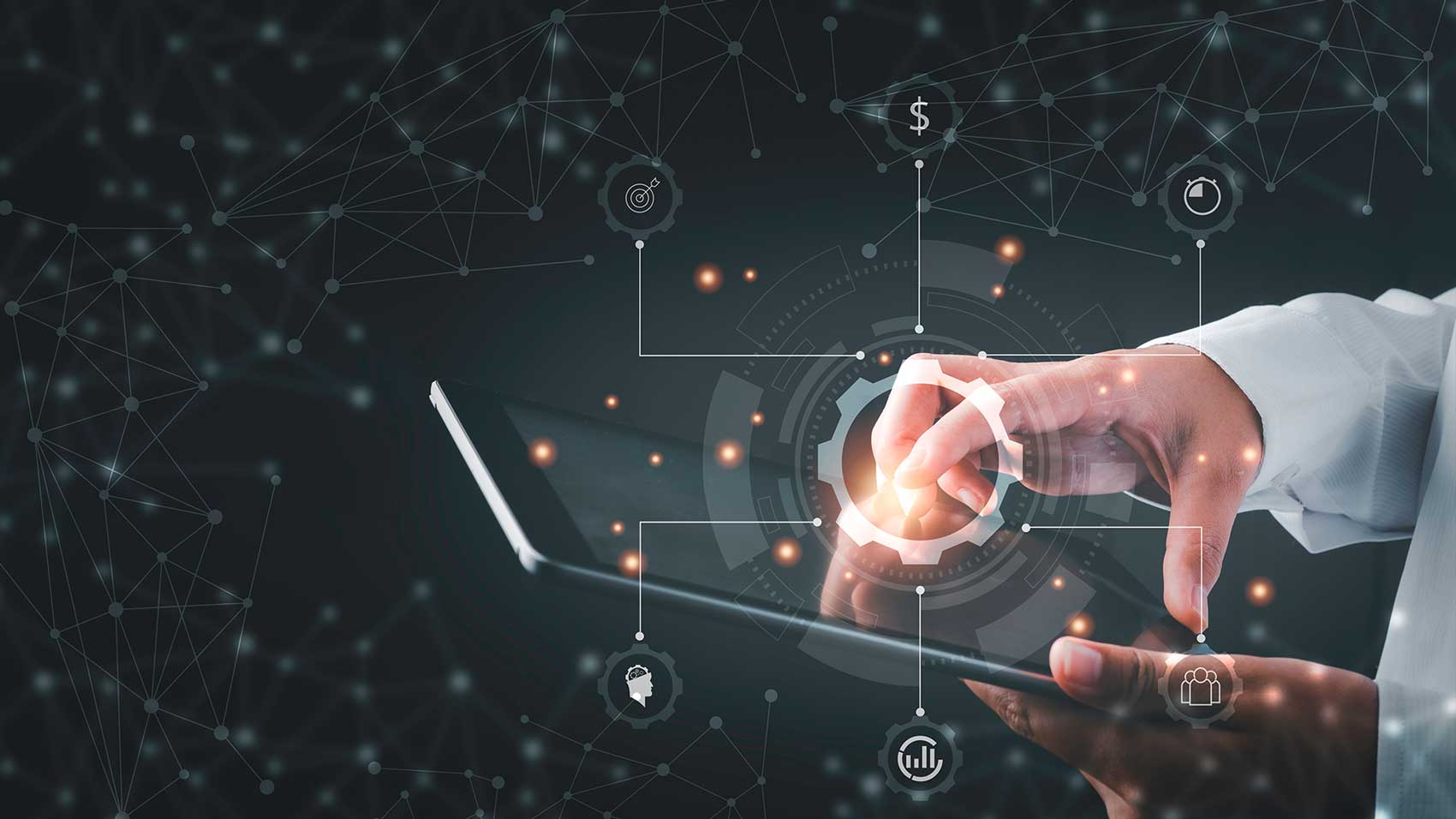Document Scanning and Digital Asset Management: A Synergy
Table of contents
In the swiftly evolving digital landscape, the processes of document scanning and Digital Asset Management (DAM) have emerged as critical components for businesses aiming to digitize and efficiently manage their vast array of documents and digital assets. This is particularly relevant in industries where the volume and complexity of documents are high, such as architectural firms and construction companies. These sectors are increasingly recognizing the importance of converting physical plans, contracts, and project documentation into digital formats, not only for preservation but also to enhance accessibility and collaboration.
The integration of document scanning into Digital Asset Management systems represents a significant leap towards operational efficiency and innovative management of architectural plans and project documentation. By digitizing physical documents, companies can streamline workflows, improve document retrieval, and ensure greater security and disaster recovery protocols. More importantly, this synergy fosters a more collaborative environment, enabling seamless sharing of vital project information both internally among departments and externally with stakeholders.
This blog delves into the transformative impact of combining document scanning with DAM systems, outlining not only the theoretical framework but also the practical steps, benefits, and considerations for architectural and construction firms embarking on this digital integration journey. Our exploration is grounded in the thesis that embracing document scanning within DAM systems offers unparalleled efficiency and innovation, propelling architectural and construction firms towards a more dynamic and future-ready operational model.
Understanding Document Scanning and Digital Asset Management
The Foundation of Digital Transformation
Document Scanning: At its core, document scanning is the process of converting physical documents into digital formats. This practice is foundational in the digital transformation journey of any business, allowing for the preservation, better organization, and enhanced accessibility of vital records. In architectural firms and construction companies, where project plans, contracts, and documentation proliferate, the importance of document scanning cannot be overstated. It not only facilitates a seamless transition to digital workflows but also ensures that historical and current project data is accessible with just a few clicks.
Digital Asset Management (DAM): Complementing document scanning, Digital Asset Management systems serve as centralized repositories for digital assets. These platforms are designed to store, organize, and share digital files, including scanned documents, within an organization. For architectural and construction industries, DAM systems offer a structured way to manage project files, design elements, and other critical documents, enabling efficient retrieval and use.
Evolution in Architecture and Construction
The adoption of document scanning and DAM in the architecture and construction sectors has evolved significantly. Initially, these technologies were leveraged to reduce paper usage and manage storage costs. However, as digital capabilities have advanced, their role has expanded to enhance project management, collaboration, and compliance. The ability to instantly access and share architectural plans and contracts, track revisions, and manage permissions has transformed how projects are executed and delivered.
This evolution reflects a broader industry shift towards digitalization, driven by the need for greater efficiency, agility, and innovation in managing complex projects. As these technologies continue to mature, their integration becomes increasingly integral to the operational strategies of firms within these sectors.
The Synergy between Document Scanning and DAM
Integrating document scanning into Digital Asset Management (DAM) systems creates a powerful synergy that significantly enhances document management processes, particularly for architectural firms and construction companies. This section explores how this integration benefits these industries, underlining improved accessibility, security, collaboration, and space management.
Seamless Integration for Enhanced Efficiency
The fusion of document scanning with DAM systems facilitates a seamless workflow from the physical to the digital realm. Scanned documents become instantly accessible digital assets within the DAM, streamlining the search and retrieval process. This integration is vital for architectural and construction projects, where the ability to quickly find and share project plans and documentation can significantly impact timelines and project outcomes.
Key Benefits of Integration
-
Improved Accessibility and Retrieval of Documents: Digital assets are easily searchable and retrievable, reducing the time spent looking for physical documents or navigating through disorganized digital files. For architects and project managers, this means faster access to project plans, specifications, and contracts, enabling quicker decision-making and project progression.
-
Enhanced Security and Disaster Recovery: Digital documents stored in DAM systems are backed up and encrypted, providing a higher level of security against theft, loss, or natural disasters. Access controls can be implemented to ensure that sensitive project documents are only accessible to authorized personnel, further safeguarding critical information.
-
Increased Collaboration Across Departments and with External Stakeholders: By centralizing digital assets, team members can access and share documents from any location, fostering collaboration not only within the firm but also with contractors, clients, and other external partners. This is particularly beneficial for construction projects that involve a wide range of stakeholders and require constant communication and document exchange.
-
Optimized Space Management and Reduced Physical Storage Needs: Digitizing physical documents significantly reduces the need for physical storage space, which can be particularly valuable in urban settings where space comes at a premium. This also translates into cost savings and contributes to more sustainable business practices by reducing the carbon footprint associated with paper production and storage.
Real-world Applications and Success Stories
Case studies and testimonials from architecture and construction firms that have successfully integrated document scanning into their DAM systems highlight the practical benefits and transformative impact of this synergy. For instance, a leading architectural firm reported a 30% reduction in project delivery times and a significant improvement in collaboration efficiency after implementing a comprehensive document scanning and DAM solution.
Implementing Document Scanning into DAM Systems
The integration of document scanning solutions into existing Digital Asset Management (DAM) systems is a critical step for architectural firms and construction companies aiming to enhance their document management capabilities. This section provides a roadmap for successful implementation, emphasizing best practices and considerations specific to these industries.
Step-by-Step Integration Process
-
Assessment and Planning: Begin with a thorough assessment of current document management processes and identify areas where document scanning and DAM can introduce efficiencies. Plan the integration process by setting clear objectives, timelines, and responsibilities.
-
Choosing the Right Technology: Select document scanning solutions and DAM platforms that best fit the company’s needs, considering factors such as scalability, user-friendliness, and integration capabilities with existing systems. For architectural and construction firms, the ability to handle large format documents and detailed plans is crucial.
-
Standardization and Indexing: Establish document format standards and indexing protocols to ensure that scanned documents are easily retrievable within the DAM system. This might involve setting up metadata tags related to project names, dates, or other relevant criteria.
-
Integration and Testing: Integrate the document scanning solution with the DAM system and conduct thorough testing to ensure seamless operation. Pay particular attention to the workflow of scanning, uploading, indexing, and retrieving documents.
-
Training and Adoption: Provide comprehensive training to staff on using the new system, emphasizing the benefits and changes to their workflow. Encourage adoption by highlighting the system’s ease of use and efficiency gains.
Considerations for Architectural Firms and Construction Companies
-
Document Format Standards: Given the specific needs of architectural and construction documentation, including plans and blueprints, it's vital to ensure that the chosen solutions support the required document formats and resolutions.
-
Indexing for Easy Retrieval: Effective indexing is crucial for quickly locating specific documents among thousands of files. Consider using project-specific tags or other relevant metadata to facilitate easy search and retrieval.
-
Selecting Technology: Beyond basic scanning and storage capabilities, look for features that support collaboration, version control, and integration with project management tools commonly used in the industry.
Best Practices for Smooth Integration
-
Start Small and Scale: Pilot the integration with a small, manageable project before scaling to the entire organization. This allows for troubleshooting and adjustments in a controlled environment.
-
Ensure Data Security: Pay special attention to the security features of both the document scanning solution and the DAM platform, ensuring that sensitive project information is adequately protected.
-
Regularly Review and Update: Technology and business needs evolve, so regularly review the integration's effectiveness and make necessary adjustments to ensure it continues to meet the company's needs.
Implementing document scanning into DAM systems, with careful planning and consideration of the unique requirements of the architecture and construction industries, can significantly enhance document management practices. By following these steps and best practices, firms can unlock new efficiencies and collaboration capabilities.
Challenges and Solutions in Integration
Integrating document scanning into Digital Asset Management (DAM) systems is not without its challenges, especially for architectural firms and construction companies that deal with a high volume of complex documents. Recognizing and addressing these challenges early on can significantly smooth the transition process, ensuring successful adoption and maximization of the new system's benefits.
Identifying Common Challenges
-
Resistance to Change: Employees accustomed to traditional ways of managing documents may resist adopting new technologies. This resistance can hinder the successful implementation and utilization of integrated document scanning and DAM systems.
-
Data Migration Issues: Transferring existing documents into the new system can be a daunting task, particularly if there are vast amounts of unsorted or poorly indexed documents.
-
Training Requirements: The effectiveness of the new system heavily relies on users being proficient in its functionalities. Adequate training is essential but can be time-consuming and resource-intensive.
-
Integration Complexities: Ensuring seamless integration between document scanning solutions and existing DAM systems, along with other project management tools, can be complex and technical issues may arise.
Providing Practical Solutions
-
Overcoming Resistance through Engagement: Involve employees in the transition process from the start. Offer clear explanations of the benefits, such as time savings and improved project outcomes, and how it will make their work easier and more efficient.
-
Structured Data Migration Plan: Approach data migration methodically by prioritizing documents based on relevance and usage. Use this opportunity to cleanse the database by archiving obsolete files and correctly indexing the rest for easy retrieval.
-
Comprehensive Training Programs: Develop a training program that is tailored to different user needs, from basic functionalities for new users to advanced features for power users. Consider using a mix of training methods, including in-person sessions, video tutorials, and written guides.
-
Expert Support for Integration: Work with technology providers who offer strong support services to address any technical issues during the integration process. Their expertise can help navigate complexities and ensure a smoother implementation.
-
Phased Implementation Approach: Implement the integration in phases, starting with a pilot project or department. This allows for learning and adjustments before rolling out the system company-wide.
Leveraging Solutions for Success
By anticipating these challenges and implementing strategic solutions, architectural firms and construction companies can facilitate a smoother transition to integrated document scanning and DAM systems. This proactive approach not only addresses potential pitfalls but also accelerates the adoption process, ensuring that organizations can quickly realize the benefits of their new document management capabilities.
Challenges and Solutions in Integrating Document Scanning with DAM
Integrating document scanning into Digital Asset Management (DAM) systems can encounter several hurdles, particularly for architectural firms and construction companies. This section identifies common challenges and provides strategies to overcome them, ensuring a smooth transition and effective adoption.
Common Integration Challenges
-
Resistance to Change: Employees accustomed to traditional document handling may resist new technologies and workflows.
-
Data Migration Issues: The process of transferring existing digital or physical documents into a new system can be complex and time-consuming.
-
Training Requirements: Ensuring that all team members are proficient in using the new system can be a significant undertaking.
-
Technical Integration Hurdles: Seamlessly integrating document scanning solutions with existing DAM platforms and other business systems can present technical challenges.
Practical Solutions and Strategies
-
Overcoming Resistance to Change:
- Communicate Benefits: Clearly articulate the advantages of the new system, including time savings, improved access to documents, and enhanced collaboration.
- Involve Key Stakeholders: Engage employees in the planning and implementation process to garner support and address concerns early.
-
Addressing Data Migration Issues:
- Plan Thoroughly: Develop a detailed migration plan that includes data backup, prioritization of documents for scanning, and a realistic timeline.
- Seek Professional Help: Consider enlisting the services of specialists in document scanning and data migration to ensure efficiency and minimize disruptions.
-
Meeting Training Requirements:
- Tailored Training Programs: Develop training sessions that cater to different user groups within the organization, focusing on specific needs and workflows.
- Ongoing Support: Provide resources for ongoing support and training, including quick reference guides, help desks, and refresher courses.
-
Solving Technical Integration Hurdles:
- Expert Consultation: Work with IT professionals and vendors to identify and resolve integration issues, ensuring compatibility and seamless workflow between systems.
- Pilot Testing: Implement a pilot program to test the integration in a controlled environment, allowing for adjustments before full-scale deployment.
Ensuring Smooth Adoption
Adopting a proactive approach to addressing these challenges is crucial for the successful integration of document scanning and DAM systems. By anticipating potential issues and implementing strategic solutions, architectural firms and construction companies can facilitate a smoother transition, encourage widespread adoption, and realize the full benefits of digital document management.
The Future of Document Management in Architecture and Construction
As we look towards the future, the fields of architecture and construction are poised to experience significant advancements in document management. Innovations in technology, including artificial intelligence (AI), machine learning (ML), and blockchain, are set to further revolutionize how documents are scanned, stored, managed, and shared. This section speculates on these future trends and their potential impact on the industry.
AI and Machine Learning Enhancements
AI and ML are at the forefront of the next wave of advancements in document scanning and digital asset management. These technologies are expected to bring about:
-
Automatic Categorization and Metadata Tagging: AI algorithms can analyze documents as they are scanned, automatically categorizing them and adding relevant metadata tags. This process facilitates easier retrieval and organization of documents within DAM systems.
-
Enhanced Search Capabilities: AI-enhanced search functions will go beyond simple keyword matching, understanding the context and content of the documents, thus improving the accuracy and efficiency of document retrieval.
-
Predictive Analytics: By analyzing historical data, AI can provide insights and forecasts on project documentation needs, helping firms plan their document management strategies more effectively.
Blockchain for Secure Document Transactions
Blockchain technology offers a promising solution for secure and verifiable document transactions. In the context of architectural firms and construction companies, blockchain can be utilized to:
-
Ensure Document Authenticity and Integrity: Each document, once scanned and entered into the blockchain, is timestamped and cannot be altered, ensuring its authenticity and integrity throughout the project lifecycle.
-
Streamline Contract and Payment Processes: Blockchain can automate contract enforcement and payments between parties, reducing disputes and enhancing trust through transparent, immutable records.
-
Improve Collaboration and IP Protection: By providing a secure platform for sharing documents, blockchain technology facilitates collaboration while protecting intellectual property rights and sensitive project information.
Preparing for a Digital-First Future
As these technologies continue to develop and integrate with document scanning and DAM systems, architectural and construction firms must stay abreast of the latest innovations. Investing in technology upgrades, training, and strategic planning will be key to leveraging these advancements, ensuring that firms not only keep pace with the digital evolution but also gain a competitive edge in project management and execution.
Conclusion
Whether you're at the beginning of your digital transformation journey or looking to enhance your current document management system, integrating document scanning with Digital Asset Management is a strategic move that promises long-term benefits. From improved document accessibility and security to enhanced collaboration and space management, the advantages are clear.
As we continue to navigate the digital age, the role of technology in shaping efficient, collaborative, and innovative work environments cannot be overstated. For architectural firms and construction companies, now is the time to act. By leveraging the power of document scanning and DAM, you can ensure that your firm is not only prepared for the challenges of today but is also future-proofed against the demands of tomorrow.
Interested in taking the first step towards a more efficient and innovative document management system? Fill out our "get a quote" form today and discover how DocCapture's document scanning services can transform your digital asset management strategy. Embrace the future of document management and give your projects the competitive edge they deserve.
Share this
You May Also Like
These Related Stories

Streamlining Document Management and Workflow with Document Scanning Services

Prepping Paper Documents for Efficient Scanning

